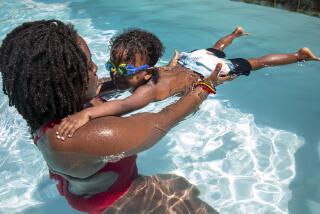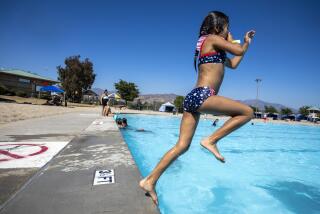My kidâs pacifier could hurt him. Itâs worrying -- to a point.
Some of the longest-lasting relics of my kidsâ infancies and toddlerhoods have been their pacifiers and their sippy cups. Even now, with the boys 3 and 5 years old, we devote two drawers in our kitchen to a collection of jumbled lids, valves and cups (many featuring slowly fading portraits of Lightning McQueen.) The binkies, which my younger son uses at bedtime and on long airplane trips, live in a banged-up plastic container perched on a high cabinet shelf.
Someday weâll be completely done with the stuff, but Iâve learned the hard way that imposing strict, newspaper-ish deadlines on the kiddie set doesnât always work to my advantage â especially when milk and upholstery are involved.
New research published Monday morning in the journal Pediatrics, however, suggests that the decision to take away the bottles, binkies and sippies could also boil down to a matter of safety. It turns out that kids get hurt using bottles, binkies and sippy cups â usually, when they sustain a fall with one of the items in their mouths.
Researchers at the Nationwide Childrenâs Hospital and the Ohio State University in Columbus reviewed Consumer Product Safety Commission records to try to ascertain how many kids wound up in emergency rooms with injuries associated with bottle, pacifier or sippy cup use between 1991 and 2010. In all, they estimated that number to be 45,398 children â an average of 2,270 cases per year.
Over 70% of the injuries were sustained to the mouth. One-year-olds accounted for nearly two-thirds of the injuries. Over 60% of the injured kids were boys. Bottles were the offending item in 65.8% of cases.
More than 90% of the accidents happened at home and nearly 99% of the kids werenât hospitalized after treatment in the ER. Not surprisingly, kids who got hurt while using a bottle tended to be younger than kids who got hurt using a sippy cup. The study did not include what might be a large number of injuries from bottles, pacifiers and sippy cups that werenât severe enough to merit a visit to the ER.
âParents might consider the potential for injury in deciding when to help their child give up the pacifier and transition to a cup,â wrote the studyâs authors, who suggested that many caregivers donât steer their kids away from these products as early as they should. The American Academy of Pediatrics recommends dumping bottles in favor of lidless cups at 12 months; binkies are best gone by 6 months.
For me, itâs all a reminder that we probably need to reclaim those sippy cup drawers, sooner rather than later.
But remember, most of the kids â 86.1% â got hurt because they fell while using the products. Arenât toddlers likely to fall, and fall often, while using a variety of different things? Say I take away the sippies. My 3-year-old, to my unending dismay, is still going to fashion weapons out of wooden spoons, run into heavy furniture in his trademark heartfelt-but-sorely-lacking imitation of LeBron James delivering a dunk, and wrestle his older brother on the concrete patio.
This kind of stuff, along with dozens of other hazards lurking in everyday little-boy life, is likely to command more of my mothering attention than a lingering sippy cup or two. Or 20.
In a 2011 study in Pediatrics, researchers found that from 1990 to 2008, an estimated 181,654 kids 2 years old and younger visited ERs after getting hurt using a crib, bassinet or playpen. In 2009, that team wrote, âcrib-related injuries accounted for more than 14,500 injuries to children younger than 5 years of age in 2009 and were associated with the majority of nursery product deaths.â
In 2010, the number of injuries from bottles, binkies and sippy cups was 2,194. âVery fewâ were fatal, the new study reported.
More to Read
Inside the business of entertainment
The Wide Shot brings you news, analysis and insights on everything from streaming wars to production â and what it all means for the future.
You may occasionally receive promotional content from the Los Angeles Times.








